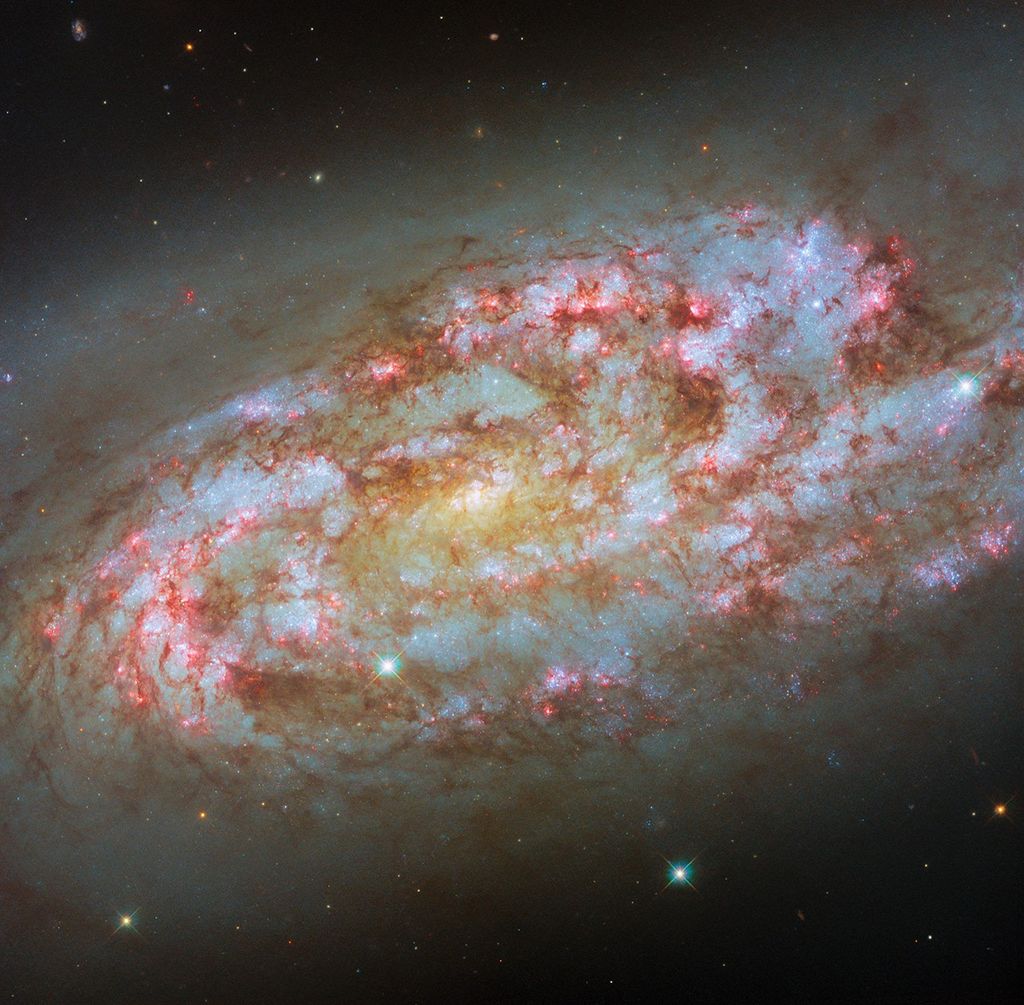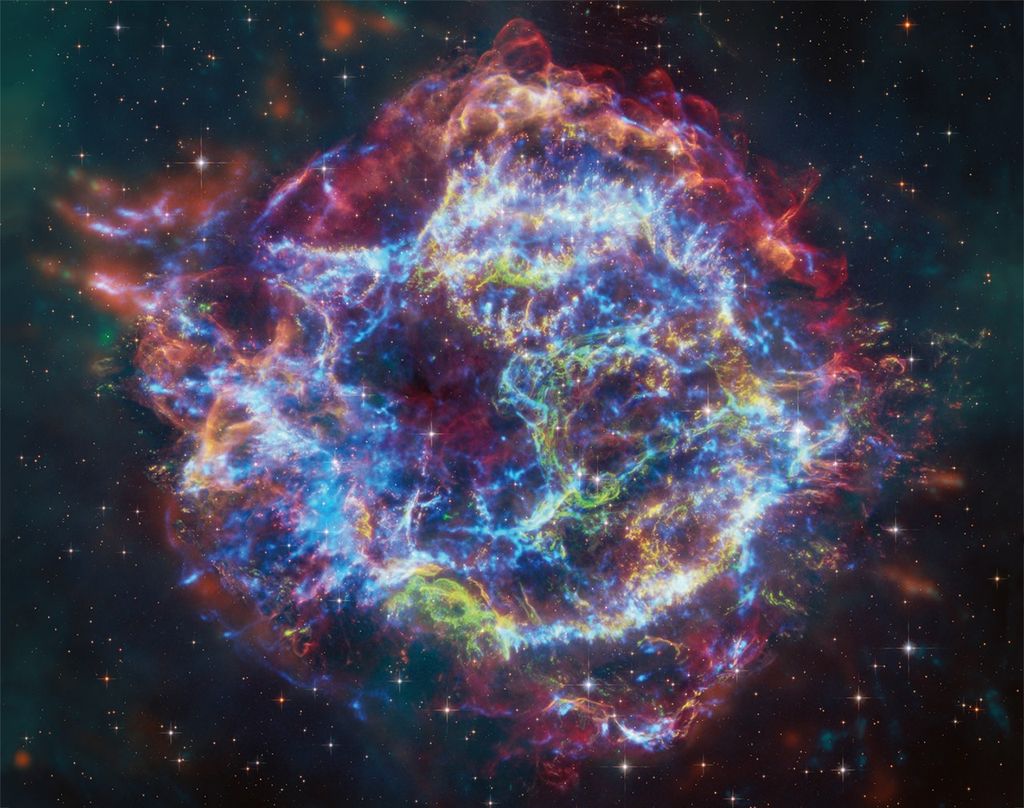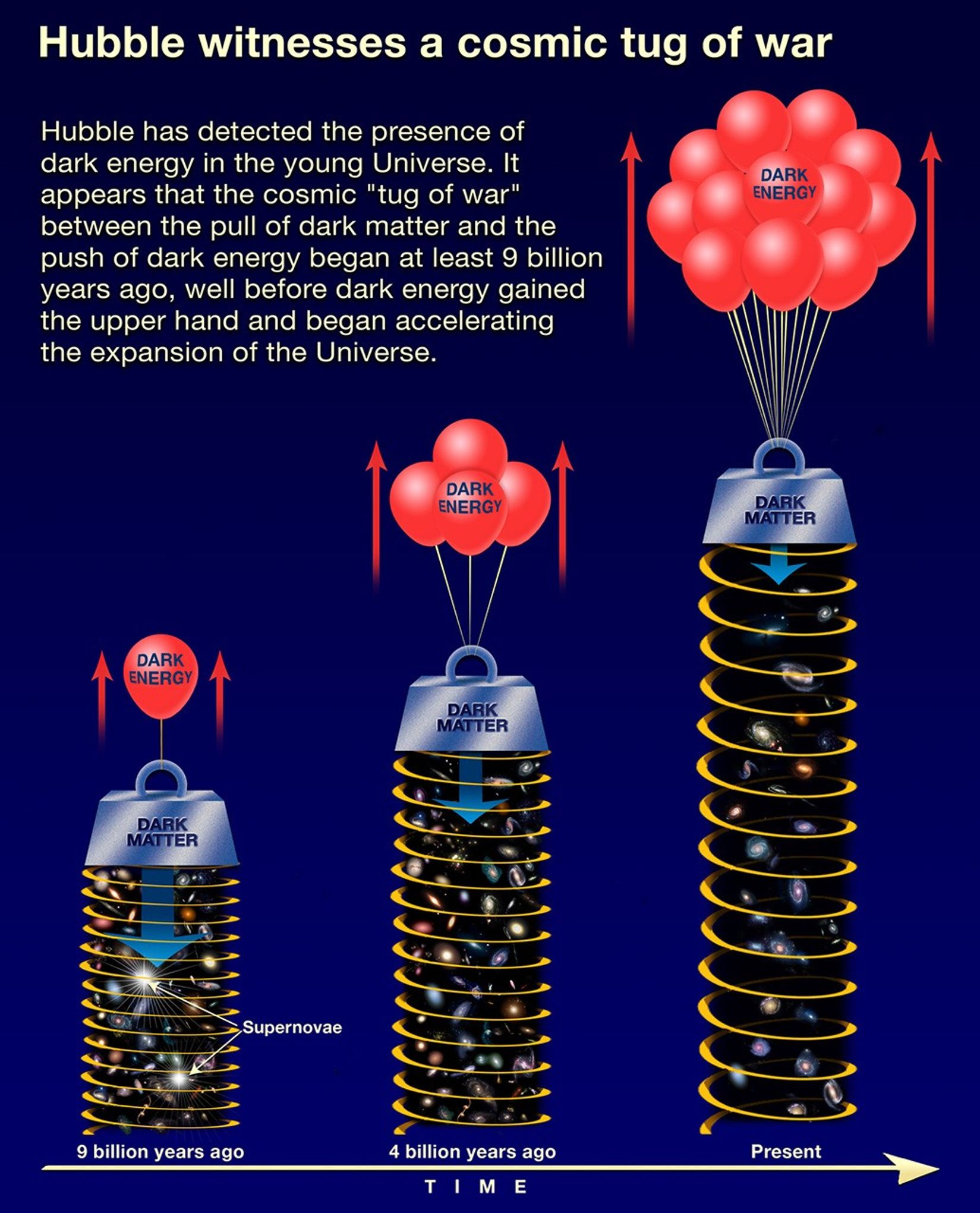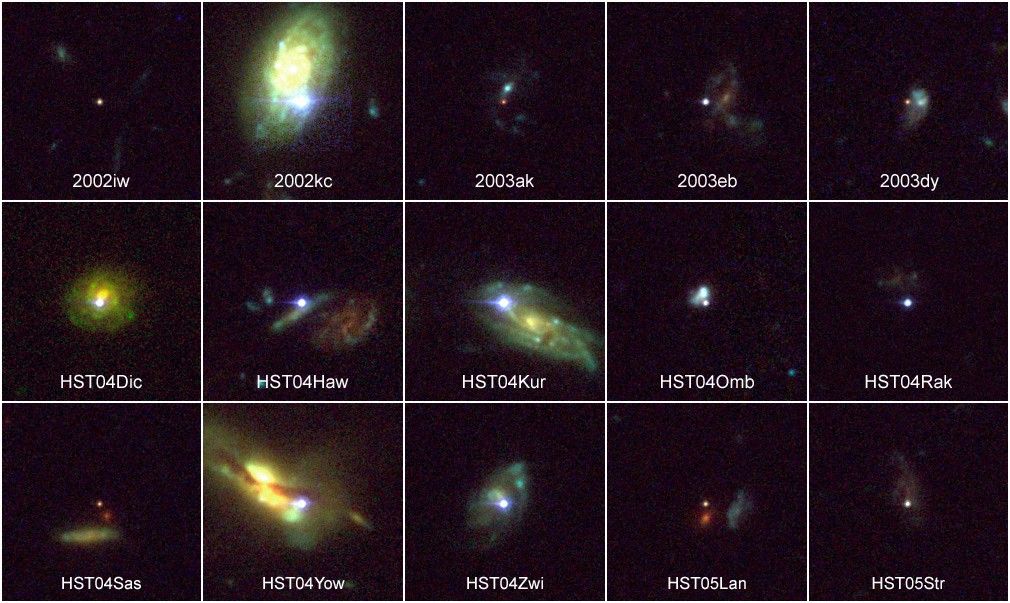1 min read
Host Galaxies of Distant Supernovae

These snapshots, taken by NASA's Hubble Space Telescope, reveal five supernovae, or exploding stars, and their host galaxies.
The arrows in the top row of images point to the supernovae. The bottom row shows the host galaxies before or after the stars exploded. The supernovae exploded between 3.5 and 10 billion years ago.
Astronomers used the supernovae to measure the expansion rate of the universe and determine how the expansion rate is affected by the repulsive push of dark energy, a mysterious energy force that pervades space. Supernovae provide reliable measurements because their intrinsic brightness is well understood. They are therefore reliable distance markers, allowing astronomers to determine how far away they are from Earth.
Pinpointing supernovae in the faraway universe is similar to watching fireflies in your back yard. All fireflies glow with about the same brightness. So, you can judge how the fireflies are distributed in your back yard by noting their comparative faintness or brightness, depending on their distance from you.
Only Hubble can measure these supernovae because they are too distant, and therefore too faint, to be studied by the largest ground-based telescopes.
These Hubble observations show for the first time that dark energy has been a present force for most of the universe's history. A spectral analysis also shows that the supernovae used to measure the universe's expansion rate today look remarkably similar to those that exploded nine billion years ago and are just now seen by Hubble.
These latest results are based on an analysis of the 24 most distant known supernovae, most of them discovered within the last three years by the Higher-z SN Search Team. The images were taken between 2003 and 2005 with Hubble's Advanced Camera for Surveys.
About the Data
- Data DescriptionData DescriptionProposal: A description of the observations, their scientific justification, and the links to the data available in the science archive.
Science Team: The astronomers who planned the observations and analyzed the data. "PI" refers to the Principal Investigator.The optical data from several HST proposals include: 9425 and 9583: PI: M. Giavalisco (STScI) and the GOODS Project 10189, 10339, and 10340: PI: A. Riess (STScI) and the PANS Project The science team includes: A. Riess (STScI/Johns Hopkins University), L.-G. Strolger (Western Kentucky University), S. Casertano, H. Ferguson, and B. Mobasher (STScI), B. Gold (Johns Hopkins University), P. Challis (Harvard-Smithsonian Center for Astrophysics), A. Filippenko, S. Jha, and W. Li (University of California, Berkeley), J. Tonry (Institute for Astronomy, University of Hawaii), R. Foley (University of California, Berkeley), R. Kirshner (Harvard-Smithsonian Center for Astrophysics), M. Dickinson and E. MacDonald (NOAO), D. Eisenstein (Steward Observatory/University of Arizona), M. Livio (STScI), J. Younger (Harvard-Smithsonian Center for Astrophysics), C. Xu and T. Dahlen (STScI), and D. Stern (Jet Propulsion Laboratory/Caltech). - InstrumentInstrumentThe science instrument used to produce the data.HST>ACS/WFC
- Exposure DatesExposure DatesThe date(s) that the telescope made its observations and the total exposure time.Various
- FiltersFiltersThe camera filters that were used in the science observations.Various
- Object DescriptionObject DescriptionThe type of astronomical object.Host Galaxies of Distant Supernovae
- Release DateNovember 16, 2006
- Science ReleaseHubble Finds Evidence for Dark Energy in the Young Universe
- Credit
Share
Details
Claire Andreoli
NASA’s Goddard Space Flight Center
Greenbelt, Maryland
claire.andreoli@nasa.gov



































